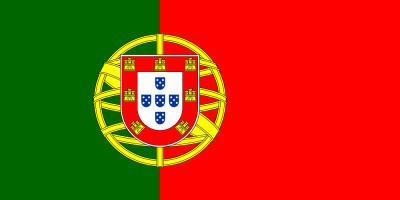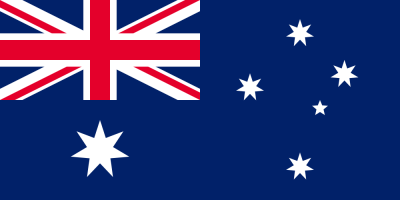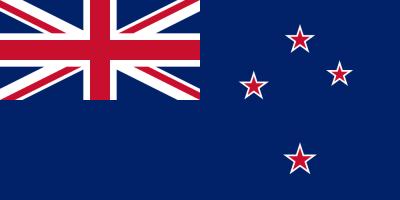Papua New Guinea flag color codes features striking colors that represent different aspects of the country. If you want to reproduce the Papua New Guinea flag colors accurately in digital or print projects, knowing the precise Papua New Guinea flag color codes is essential. This article will provide the HTML HEX, RGB, PANTONE, HSL, CMYK, HWB and NCOL color values for the red, black and gold on the Papua New Guinea flag. With the accurate Papua New Guinea flag color codes, you can pay respectful homage to this South Pacific island nation in your creative works.
Table of Contents
What are the colors of Papua New Guinea flag?
The colors of the Papua New Guinea flag are:
Red – Represents the blood of the people and their bravery.
Black – Represents the skin color and unity of the people.
Yellow – Represents the natural wealth and mineral resources of the country.
White – Represents peace and unity
So the four official colors of the Papua New Guinea flag are red, black, gold/yellow, and white.
Papua New Guinea flag color codes & Color Names:
RED
| Color Model | Value |
|---|---|
| HTML Code | #CE1126 |
| HEX Code | CE1126 |
| RGB Values | 206, 17, 38 |
| PANTONE Code | 186 C |
| HSL Values | 353°, 85%, 45% |
| CMYK Values | 0%, 92%, 82%, 19% |
| HWB Values | 353°, 11%, 19% |
| NCOL Values | 0.00, 0.85, 0.45 |
BLACK
| Color Model | Value |
|---|---|
| HTML Code | #000000 |
| HEX Code | 000000 |
| RGB Values | 0, 0, 0 |
| PANTONE Code | Black C |
| HSL Values | 0°, 0%, 0% |
| CMYK Values | 0%, 0%, 0%, 100% |
| HWB Values | 0°, 0%, 100% |
| NCOL Values | 0.00, 0.00, 0.00 |
YELLOW
| Color Model | Value |
|---|---|
| HTML Code | #FFD100 |
| HEX Code | FFD100 |
| RGB Values | 255, 209, 0 |
| PANTONE Code | 1235 C |
| HSL Values | 45°, 100%, 50% |
| CMYK Values | 0%, 18%, 100%, 0% |
| HWB Values | 45°, 0%, 0% |
| NCOL Values | 0.00, 0.18, 0.50 |
WHITE
| Color Model | Value |
|---|---|
| HTML Code | #FFFFFF |
| HEX Code | FFFFFF |
| RGB Values | 255, 255, 255 |
| PANTONE Code | Safe |
| HSL Values | 0°, 0%, 100% |
| CMYK Values | 0%, 0%, 0%, 0% |
| HWB Values | 0°, 100%, 0% |
| NCOL Values | 0.00, 0.00, 1.00 |
What is the meaning of colors in the Papua New Guinea flag?
Red – Represents the blood of the people and their bravery. The red acknowledges the nation’s fight for independence, respect and identity.
Black – Represents the skin color and unity of the indigenous people of Papua New Guinea. The black symbolizes their shared history and common identity.
Gold/Yellow – Represents the natural wealth and mineral resources of the country. Gold symbolizes the nation’s economic prospects through mining and rich natural resources.
White – Represents peace and unity, as well as clouds and rich waterfalls reflected in the sun. The white stands for optimism, tranquility and opportunity ahead for the people.
In summary, red symbolizes sacrifice and courage, black symbolizes shared identity, gold represents prosperity, and white stands for unity and peace. The combination of these four colors captures Papua New Guinea’s history, its people, and its hopes for the future.
Explore More Flag Colors:
- Turkmenistan Flag Color Codes
- Solomon Islands Flag Color Codes
- Tuvalu Flag Color Codes
- Curacao Flag Color Codes
FAQs: Frequently Asked Questions:
Is Papua New Guinea a rich or poor country?
Papua New Guinea is often classified as a developing country with a diverse economy. It possesses significant natural resources, including minerals, oil, and gas. However, despite its resource wealth, the country faces challenges such as poverty, corruption, and limited infrastructure development.
The distribution of wealth in Papua New Guinea is uneven, with a large portion of the population engaged in subsistence agriculture. Additionally, issues such as inadequate healthcare and education contribute to the overall socioeconomic challenges faced by the nation.
Which country does Papua New Guinea belong to?
Papua New Guinea is a sovereign country located in the southwestern Pacific Ocean. It is not part of any other country. It is an independent nation with its own government, borders, and distinct identity. Papua New Guinea shares a land border with Indonesia to the west and maritime borders with Australia to the south.
Why is Papua New Guinea so famous?
Papua New Guinea is known for several notable reasons:
Cultural Diversity: Papua New Guinea is incredibly rich in cultural diversity, with over 800 languages spoken and a vast array of indigenous cultures. The traditional customs, rituals, and art of the various ethnic groups contribute to the country’s cultural significance.
Biodiversity: The country is home to a remarkable diversity of flora and fauna. Papua New Guinea is part of the Coral Triangle, one of the most biodiverse marine regions on Earth. Its rainforests are also home to a wide variety of plant and animal species, some of which are endemic.
Unique Traditions: Traditional practices and rituals are an integral part of Papua New Guinea’s identity. Practices such as tribal dancing, elaborate costumes, and ceremonial events contribute to its cultural uniqueness.
What is a major problem in Papua New Guinea?
Papua New Guinea faces various challenges, and one major problem is the complex issue of development and governance. Some key challenges include:
Poverty: A significant portion of the population in Papua New Guinea experiences poverty. Limited access to basic services such as healthcare, education, and infrastructure contributes to the overall economic challenges.
Corruption: Corruption is a pervasive issue in Papua New Guinea and can hinder development efforts. It affects various sectors, including government institutions, law enforcement, and business.
Healthcare: Access to healthcare services is a concern, particularly in rural areas. Limited infrastructure, a shortage of medical personnel, and the prevalence of diseases pose challenges to the healthcare system.
Education: Although efforts have been made to improve education, there are still challenges in providing quality education to all citizens. Remote and rural areas often face difficulties in accessing educational resources.
Is it safe to travel to PNG?
Papua New Guinea (PNG) has faced challenges related to safety and security, and travel to certain areas may carry risks. It’s essential for travelers to be aware of the current situation and take precautions. Here are some considerations:
Crime: PNG has experienced issues related to crime, including petty crime and more serious offenses. Travelers should exercise caution, particularly in urban areas, and take steps to enhance personal safety, such as avoiding poorly lit areas and not displaying valuable items.
Tribal Conflict: Some areas of Papua New Guinea experience tribal conflicts and disputes over land and resources. Travelers should be aware of the local context and, if necessary, seek advice from authorities on safe travel routes.
Health Concerns: PNG has areas where healthcare infrastructure may be limited. It’s important to take health precautions, including vaccinations and carrying necessary medications. Malaria is a concern in some regions, and travelers should take appropriate preventive measures.
What is the main source of income in Papua New Guinea?
Natural Resources: Papua New Guinea is rich in natural resources, and the extraction and export of minerals, oil, and gas play a crucial role in the economy. Major resource projects include mining operations for gold, copper, and other minerals, as well as liquefied natural gas (LNG) production.
Agriculture: Subsistence agriculture is a significant source of income for a large portion of the population. The cultivation of crops such as sweet potatoes, taro, coffee, and cocoa contributes to local livelihoods. Additionally, palm oil production has become an important industry.
Forestry: Papua New Guinea has extensive forests, and logging is an important industry. However, concerns have been raised about unsustainable logging practices and their impact on the environment.
What is the main religion of Papua New Guinea?
Papua New Guinea is characterized by a diverse range of cultures and languages, and as a result, there is no single dominant religion. The country is known for its cultural and religious diversity, with various traditional belief systems coexisting alongside Christianity.
Christianity, in its various denominations, is the largest religious influence in Papua New Guinea. The major Christian denominations include:
Roman Catholicism: The Roman Catholic Church has a significant presence in Papua New Guinea and has been involved in education, healthcare, and social services.
Protestantism: Various Protestant denominations, including Anglicanism, Lutheran, Methodist, and Pentecostal churches, are active in the country.
Evangelical Christianity: Evangelical and charismatic Christian movements have also gained followers.
How is life in Papua New Guinea?
Life in Papua New Guinea can vary significantly depending on factors such as location, access to resources, and cultural influences. Papua New Guinea is known for its cultural diversity, stunning landscapes, and unique traditions, but it also faces various challenges. Here are some aspects of life in Papua New Guinea:
Cultural Diversity: Papua New Guinea is incredibly diverse, with hundreds of ethnic groups and languages. Each group has its own customs, traditions, and languages, contributing to a rich cultural tapestry.
Rural and Urban Contrasts: Life in rural areas is often characterized by subsistence agriculture, traditional practices, and close-knit community structures. In contrast, urban centers like Port Moresby may have more modern amenities but can also face issues like crime and limited infrastructure.
Economic Challenges: While the country has significant natural resources, the distribution of wealth is uneven. Poverty is a challenge in some areas, and access to basic services like healthcare and education can be limited, particularly in remote regions.













